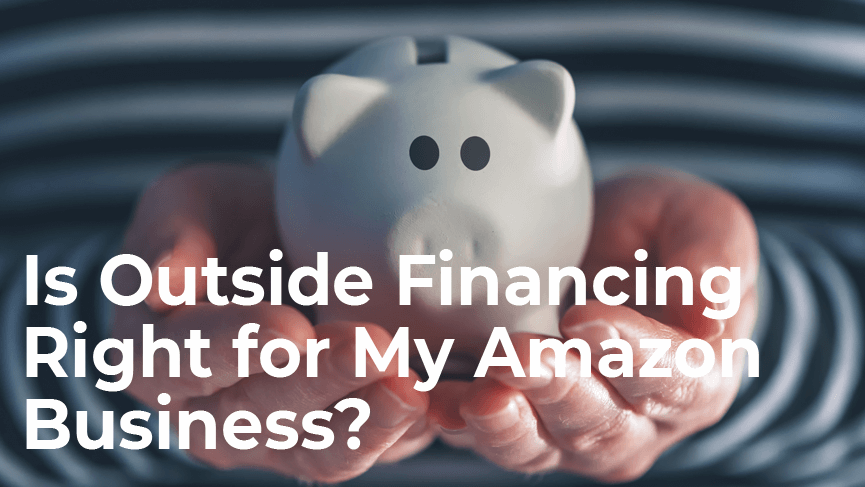Below is a guest post from Victoria Sullivan, Marketing Manager at Payability – an online financing company for Marketplace and eCommerce sellers.
———————–
As an eCommerce seller, you have a million decisions to make on a daily basis: what to sell, where to sell it, how to fulfill it, when to expand, and so much more. Another common question is around financing. Specifically, when you should use it. This one can be particularly tough to figure out because there are so many different financing options and use cases out there. To help you determine when to use financing, we put together everything you need to know about it below.
When You Should Consider Outside Financing
First things first, you should only seriously consider outside financing if you are certain that you’ll get a return on the investment. If borrowing money doesn’t make you money, you could end up in a lot of financial trouble. At the end of the day, think of financing as a tool to fuel your business’ growth, which leads us to our next section…
What Financing Can Do For Your eCommerce Business
If your business is showing signs of growth, it might be time to consider outside financing. After all, you need to make strategic investments in order to grow. Here, we outline a few common growth areas and how financing can take them to the next level:
- Fast-Moving Product: If you have a proven product that is selling well, you’ll want to invest in more of it so you can turn more inventory more quickly and keep up with momentum. As an eCommerce seller, you likely experience payment delays and the resulting cash flow gaps that can make it difficult to replenish inventory as you need it. With outside financing, you can avoid these cash flow gaps altogether and always meet demand.
- New Product Launch: If you’re ready to expand your product line, outside financing can help you invest in new inventory without disrupting the momentum of any existing products you’re already selling.
- Sponsored Product Campaigns: When you’re confident you have enough supply, financing can help you launch marketing campaigns to increase demand and stand out among your competition.
- Outsourcing Work: Let’s face it — running an eCommerce business is a LOT of work and you shouldn’t have to do everything yourself. In fact, when you try to do everything alone, you risk spending all your time stuck in the weeds rather than on developing strategies for long-term sustainable growth. If this sounds like you, you could use the financing to outsource (or hire help for) everything from inventory management to new product & keyword research to order fulfillment and more.
How to Save Money with Outside Financing
All in all, using outside financing can help your business grow in a variety of ways. But we know what you might be thinking — this is all great but financing isn’t free. For even more proof that investing in outside financing can help your business, consider these two cost-saving benefits:
- Negotiating Leverage: When you have readily-available funds, you could pay your suppliers early and/or upfront, allowing you to negotiate for better deals on things like unit cost, shipping fees, and more.
- Opportunity Cost: Have you asked yourself what the repercussions would be for not using financing? Take a fast-moving product, for example. If you are approaching or are actually experiencing a stockout, you likely won’t have enough cash for a resupply order or any associated rush fees. Which means you could lose sales and put your entire account at risk.
What Financing Options Are Right For You
So what type of financing is best for your business? In this section, we’re focusing on three common solutions for businesses. After all, business financing is different than personal financing and when you want to invest in your business’ growth, you shouldn’t be putting your personal credit on the line.
- Business Credit Cards: Credit cards can be appealing because of the “buy now, pay later” use-case and the cash back rewards, but remember this: credit limits only let you invest so much and, if you’re not responsible with your payments, you could end up in an expensive and seemingly never-ending debt cycle.
- Business Loans: There are two categories of business loans available these days — business bank loans and online business loans. Banks offer large loan amounts, long terms, and low-interest rates, but they primarily work with established storefront businesses, the application process is long and tedious, and approval rates are low. Compared to banks, online business loans are smaller dollar amounts, shorter terms, and more expensive, but the application process is fast and easy, and approval rates are high.
- Payability: How about a solution designed specifically for eCommerce sellers? That’s exactly what Payability is. And they’re not a loan — with Payability, you get your income as you earn it so you can access cash daily and invest in growth. Here’s how their products work:
- Instant Advance: Payability buys a certain amount of your future receivables up front and at a discount, giving you a large lump sum of cash you can draw from daily for a rate of only 1% per week. Based on your account health and sales performance, you could get an advance of up to $250,000.
- Instant Access: Payability pays you your income one business day after making a sale. For same-day, weekend and holiday access, they also offer a Seller Card which comes with its own cash-back benefits including up to 2% cash back on all spend.
Payability has helped more than 2,500 marketplace sellers grow their businesses. Hear from one of them, Gina Goldring, who increased her sales by 50% with her first Instant Advance. Then visit go.payability.com/JungleScout to see how your business can have similar success and claim your $200 sign on bonus.

 2 Comments
2 Comments
2 comments on “When Should eCommerce Sellers Utilize Outside Financing?”